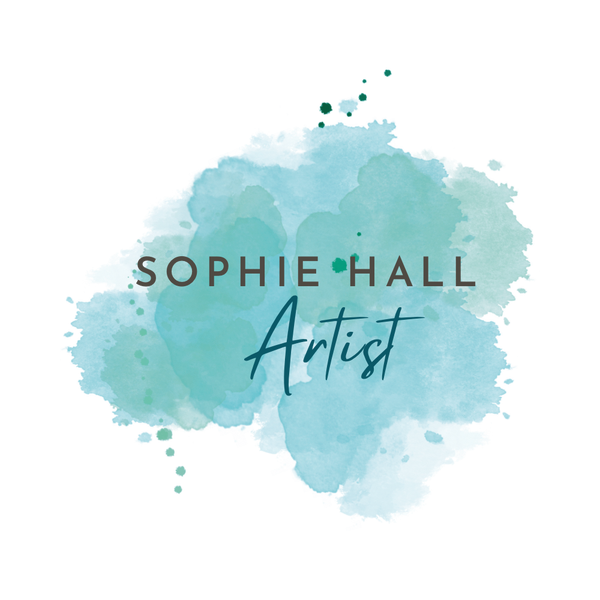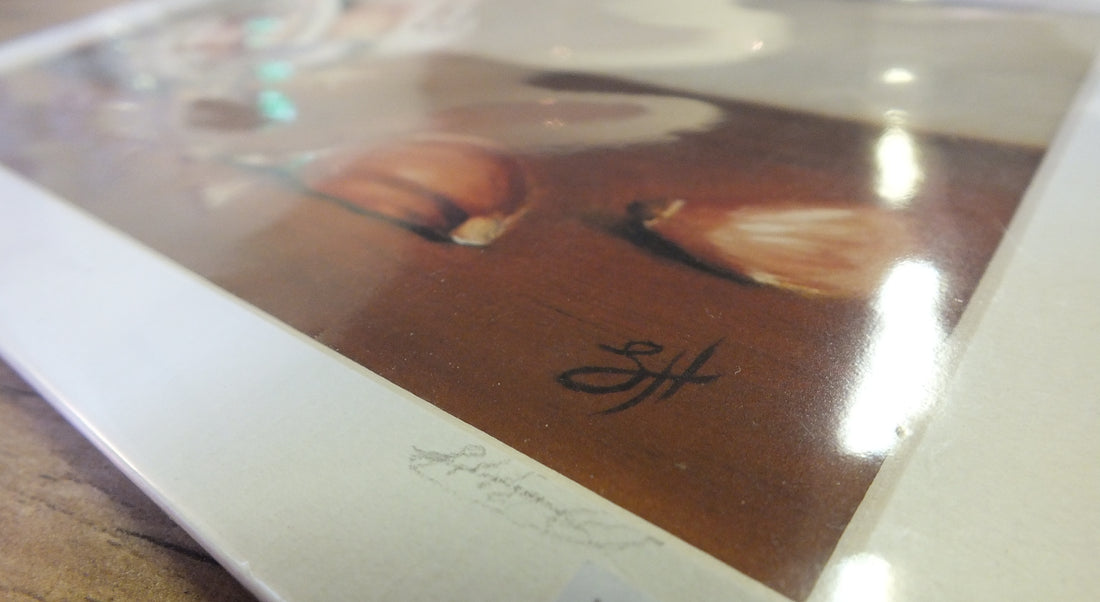You have probably noticed that I use the word "Giclee" to describe many of the products in my shop. Giclée printing is a sophisticated type of ink-jet printing, which I have chosen to use to reproduce many of my newer digital drawings to ensure quality and longevity of my products. I originally began using giclee printing to create affordable reproductions of my still life oil paintings. The quality and clarity of these kinds of products were excellent, and I knew that when I began selling other printed items this was the only way to ensure I was selling my work in the best possible format.

So what is Giclée Printing?
Etymology
Giclée (pronounced "zhee-CLAY" is a French word that means "squirt or spurt". In this usage, giclée alludes to the digitally-controlled inkjet nozzles of a printer which precisely "squirt" millions of microscopic droplets of ink per second onto the media in place to form the image. Giclée is a neologism coined in 1991 by printmaker Jack Duganne for fine art digital prints made on inkjet printers. The name originally applied to fine art prints created on a modified Iris printer in a process invented in the late 1980s.
High Resolution
With an apparent resolution of 1440 dots per inch for watercolor paper and 2880 dpi for photographic paper, the detail and colour vibrancy exceeds traditional print-making technologies such as lithographs and serigraphs.
Artistic Quality
The result, when used with archival quality photo-rag paper, is a highly detailed print which is as textured and beautiful as any original pencil drawing. The prints have a "made-one-at-a-time" quality that is very appealing to the artist, dealer, and collector alike. Giclée prints have a unique artistic feel that must be seen to be appreciated.
Durable and Long Lasting
Independent testing by Wilhelm Imaging Research Inc. (a world-leader in image-longevity testing) has established that these “Archival Prints”/”Giclee Prints” will last around 200 years before any noticeable shift in colour integrity occurs.
Paper
The type of paper used is just as important as the printing format. For all my prints I have chosen to use Hahnemühle Photorag. This is in part because the texture is extremely similar to the paper I use to create my drawings and the print therefore has the most realistic and genuine texture and feel. The paper gives muted blacks with even colour reproduction, and excellent detail. The surface has minimal texture with a chalky smooth cotton feel which creates smooth colour gradients. It has a delicate surface, not unlike traditional drawing paper, extra care when handling is recommended.
Framing
Photorag is suitable for mounting, and I recommend mounting in a neutral colour (white, grey or black) and framing with a simple glazed frame to prevent sun bleaching. I aim to size all of my prints in a way that means you can frame them with standardised frames, however, it's important to double check any measurements when purchasing frames. Please get in touch if you would like any assistance or advice with framing.

My Prints
The company I use to produce my giclee prints are called the Print Space. They have depots around the world to ensure faster delivery to clients, and they very helpfully fulfil any orders placed on the website here to ensure I'm not spending lots of money on creating and storing prints in advance of orders. This also means you receive your prints to the specifications I've decided are best for presenting my work, but in a time frame that suits you and at a quality which is undeniable. The print space explain more about giclee printing on their website here: https://www.theprintspace.co.uk/professional-giclee-art-printing/

If you would like to request a special one off print on a different type of paper or at a different size, please send me a message here or drop me an email with the details of your request.

